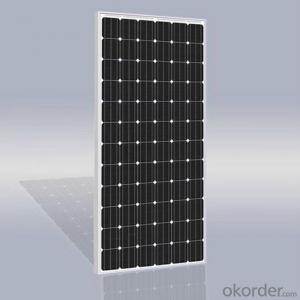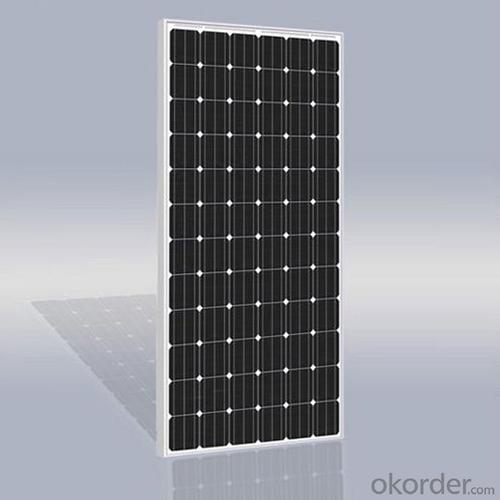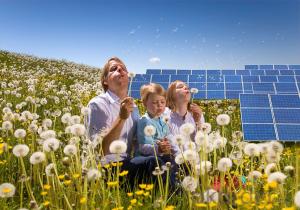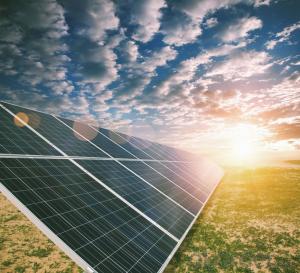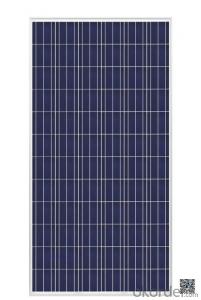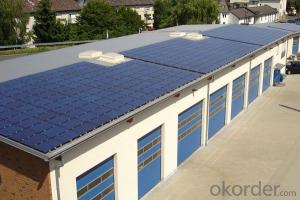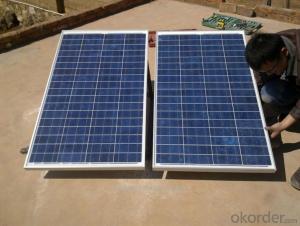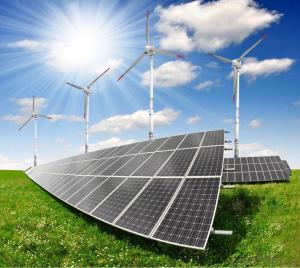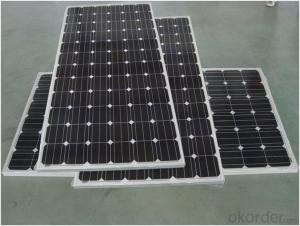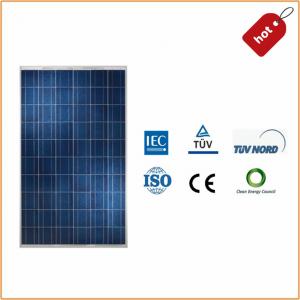Info Solar Panels:Poly Solar Panel Purchase from China Manufacturer
- Loading Port:
- Shanghai
- Payment Terms:
- TT OR LC
- Min Order Qty:
- 7875 watt
- Supply Capability:
- 10000000 watt/month
OKorder Service Pledge
OKorder Financial Service
You Might Also Like
Specification
Solar Module Summarize
Solar Module is the core part of solar PV power systems, also is the highest value part of it. The function of Solar Module is to convert the sun's radiation to electrical energy, or transfer it to battery and store in it, or to drive the load running.
The Product has been widely used in space and ground, it mainly used for power generation systems, charging systems, road lighting and traffic signs areas. It could offer a wide range of power and voltage, and with high conversion efficiency, and long service life.
Technical Parameter:
Good Quality 185W Solar Panel | |
Peak Power-Pmax(W) | 185W |
Open Circuit Voltage-Voc(V) | 44.2 |
Maximum Power Voltage-Vmp(V) | 36 |
Short Circuit Current-Isc(A) | 5.4 |
Maximum Power Current-Imp(A) | 5 |
Maximum System Voltage | 1000V DC |
Maximum Series Fuse Rating | 10A |
Power Tolerance | -1~+3% |
Temperature Coefficients of Pmax | -0.45%/℃ |
Temperature Coefficients of Voc | -0.348%/℃ |
Temperature Coefficients of Isc | 0.031%/℃ |
Nominal Operating Cell Temperature | 44.5±2℃ |
Standard Testing Condition(STC) | Irradiance:1000W/m²;Temperature:25℃;AM=1.5 |
Qualification Test Parameters | |
Operating Temperature | -40℃~+85℃ |
Storage Temperature | -40℃~+85℃ |
Pressure Bearing | ≥5400Pascal/m² |
Wind Bearing | ≥5400Pascal/m² |
Mechanical Characteristics | |
Cell Size | Mono 125*125mm±0.5 |
No.of Cells | 72pcs(6*12) |
Dimension | 1580*808*40mm |
Weight | 15.5Kg |
Glass | 3.2mm High Transmission,Low Iron |
Frame | Anodized Aluminum Alloy |
Junction Box | IP65Rated |
Internal Diodes | 3 Bypass Diodes |
Cable | 1*4.0mm² Length 900mm |
Production Flow :
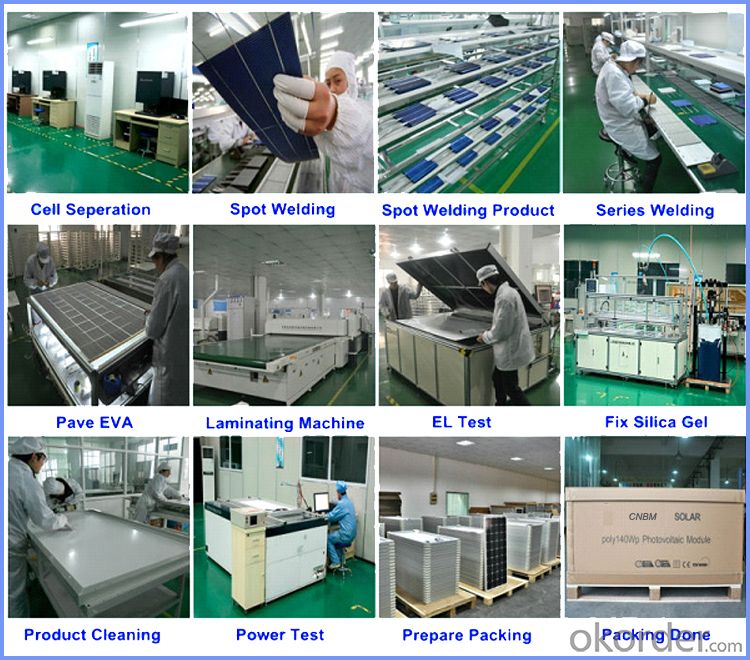
Product Show:
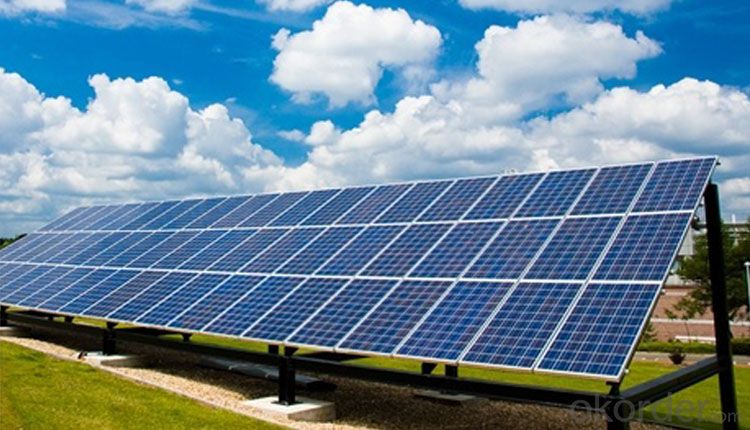
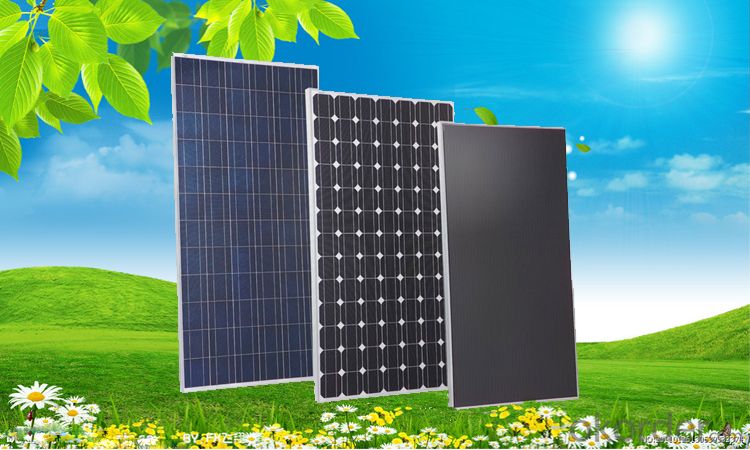
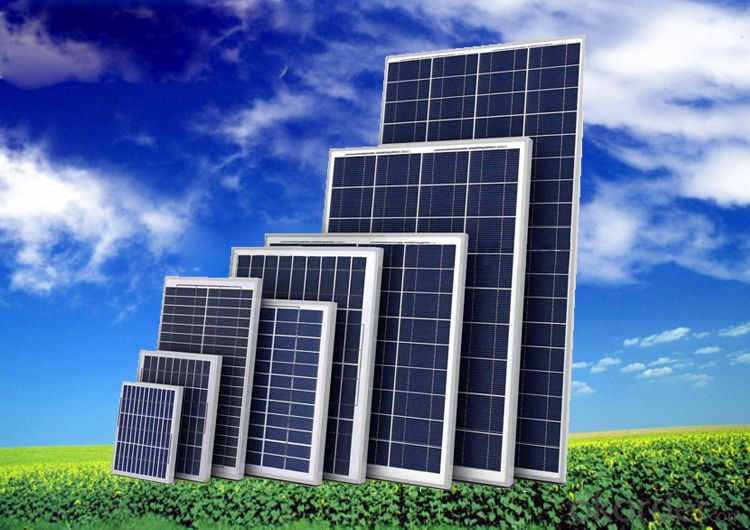
Packing & Shipping:
We have rich experience on how to pack the panels to make sure the safety on shipment when it arrives at the destination.
The normal size is packed by 25pcs/ carton / pallet. Paper carton for FCL shipping and wood carton for LCL shipping.
FAQ:
(1)What price for each watt?
It depends on the quantity, delivery date and payment terms.
(2)What is your size for each module? Can you tell me the Parameter of your module?
We have different series of panels in different output, both c-Si and a-Si. Please take the specification sheet for your reference.
(3)Can you provide the peripheral products of the solar panels, such as the battery, controller, and inverter? If so, can you tell me how do they match each other?
Actually we are only manufacturer of solar panels, but we could try to source them for you in China if you need. We could provide you an optimal system design to instruct you how to install.
- Q: What is the difference between monocrystalline and polycrystalline solar panels?
- Monocrystalline solar panels are made from a single crystal structure, typically silicon, which results in a uniform appearance and higher efficiency. Polycrystalline solar panels, on the other hand, are made from multiple silicon fragments, resulting in a less uniform appearance and slightly lower efficiency.
- Q: I had an idea for new parabolic solar panels shaped like horseshoes. They can install them outside buildings facing the equator. They could angle them from the ground based on how many degrees latitude the location and rotate them according to seasonal changes. The disadvantage of photovoltaic panels is that they are not all capable of receiving direct sunlight. That is the quintessential reason I believe horseshoe solar panels are more effective than flat rectangular ones. One side could function in the morning; the middle could perform at midday; and the other could operate during the evening. That method seems more sensible than hourly positioning. I'm certain horseshoe panels could save and produce more electricity. A football stadium, shopping mall, or outlet center would be a fantastic place. What do you think?
- Sounds like you are thinking which is excellent. Now do a controlled experiment. Using a prototype of your receiver and measure it against existing technology. You could do a computerized mock up.
- Q: what are solar panels?
- Solar Panels collect solar energy from the sun and then solar energy is used to produce electricity.
- Q: What is the impact of tree shading on solar panels' efficiency?
- The impact of tree shading on solar panels' efficiency is negative as it reduces the amount of sunlight reaching the panels and therefore decreases their energy production.
- Q: i want to build a stationary model of a solar panel and i dont know if it is going to be too simple or not i also want ideas to make it betterplease criticism is allowedmy idea was to make a case, just like a real solar panel, and take plexiglass to make it. i want to add some models of photovoltaic cells that look like they are in a solar panel . i want to add the fake shoulderings as well . i want to make the case openable by hinges.i would like some of your thoughts and ideas to help me .thx
- The okorder /
- Q: I was looking at thin flexible solar panels as solar panels 500w a option to upgrade a 20w solar panel I have permanently mounted to the roof of a home made camper van.Why I was thinking flexible is at just 2mm thin they can be glued down and being flexible they will follow the contour of the rounded shape of the roof of my camper (boxy standard solar panel spoils the lines a little)Another reason is no glass to brake when traveling on dirt tracks(though I am surprised mine hasn't broken yet after thousands of km on corrugated dirt roads). Finally there is a weight saving at only /3 the weight or less then a standard glass panel.There are different grades of flex PV some of the more expensive ones are very flexible with extremely thin backing at around .5mm The ones I was looking at are cheaper and at around 2mm with a thin flexible aluminum backing.$250 is about the going rate for 20w OKorder job. Below is a pic of a smaller one 60w or so.Has anyone had any experience with them?
- Guide okorder /
- Q: Actually I want to convert my home electricity on Solar Panel to cut down electricity costI have 2 AC's, a refrigerator, 3 Television, 2 Computers, 4 Fans etc
- good okorder lots of good ideas there
- Q: How hard is it to install solar energy panels on your house? Is this a reasonable way to produce 00% of your house's energy? Is there any danger?
- It okorder /
- Q: How do solar panels perform in cloudy weather?
- Solar panels can still generate electricity in cloudy weather, although their performance is reduced compared to sunny days. Cloud cover reduces the amount of sunlight reaching the panels, resulting in a decrease in energy production. However, solar panels can still produce a significant amount of energy even under cloudy conditions, making them a viable source of renewable energy in regions with less sunlight.
- Q: a fiber optic network could distribute solar energy from warm states to the rest of the country. Using a Federally created program,the energy would be used through a trust program to benefit all of our citizens equally. It would create thousands of jobs and help us with our dependence on foriegn oil supplies. This is no different than work programs created by the Feds during the 930's depression era.
- Claire's argument doesn't make much sense to me either. First; Claire is talking about the second law ('you can only lose or break even'), not the third law ('you can't get to absolute zero'). Easily confused, but not that important! Putting a solar panel down _can_ increase the heat absorbed by Earth. Everything has an 'albedo' (the proportion of incoming light it reflects), and Earth's average albedo is about 0.3 (ie 30% of incoming light is reflected, most of which leaves the atmosphere straight away). By putting a 0.05 albedo solar panel down on a 0.3 albedo surface, you increase the amount of sunlight that is absorbed by Earth and therefore contribute to warming. This heat is re-radiated at the Earth's temperature, in the right wavelength range to be absorbed by greenhouse gases too. If you put a panel down on equatorial ocean, or a black roof, however, there is pretty much no effect (since the albedo change is small). Also, the heating effect only lasts as long as the panel is there. Most panels are estimated to last 50 years, meanwhile CO2 has a mean lifetime of 00+ years. I did some maths and found that the 00 year averaged change in radiative forcing for solar panels was negative compared to the UK electric grid, because the reduction in CO2 emissions has a larger effect than the change in albedo. If I have spare time tomorrow I'll redo the calculations and share them. The albedo change has to be considered though!
Send your message to us
Info Solar Panels:Poly Solar Panel Purchase from China Manufacturer
- Loading Port:
- Shanghai
- Payment Terms:
- TT OR LC
- Min Order Qty:
- 7875 watt
- Supply Capability:
- 10000000 watt/month
OKorder Service Pledge
OKorder Financial Service
Similar products
Hot products
Hot Searches
Related keywords
